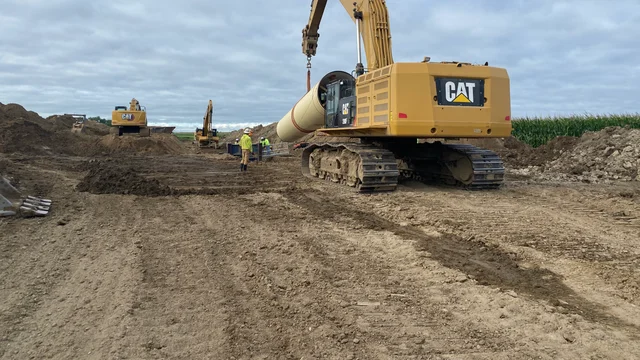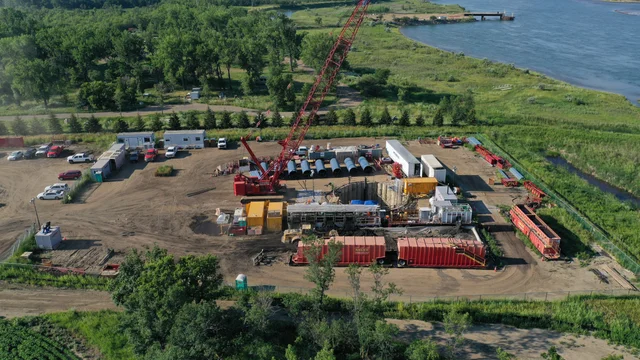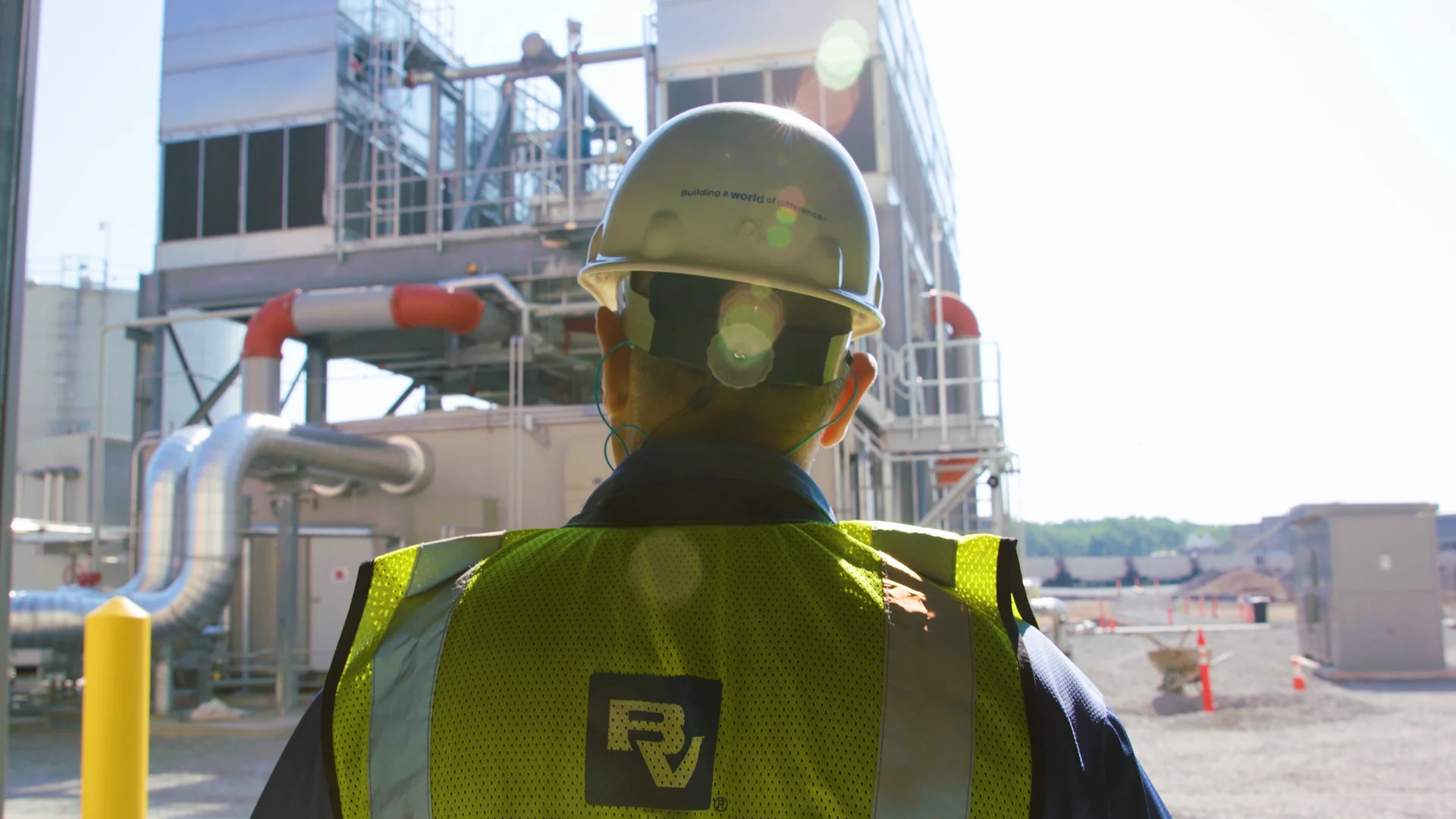Black & Veatch Delivering North Dakota’s Conduit to Drought Resilience

- Project Name
- Red River Valley Water Supply Project
- Location
- North Dakota
- Client
- Garrison Diversion Conservancy District, Lake Agassiz Water Authority
Supply Pipeline to Strengthen Resiliency
North Dakota is a land of weather extremes – often experiencing bouts of either too much or too little water. Resilience during times of drought is the driver behind the $1.16 billion Red River Valley Water Supply Project (RRVWSP). The project’s centerpiece is an approximately 125-mile-long, 72-inch-diameter pipeline that will bring 165 cfs of treated water from the Missouri River to supplement the supply for more than 30 cities and rural systems in central North Dakota and the Red River Valley in the eastern half of the state. The buried trans-basin pipeline plus associated infrastructure, including major pump stations and a water treatment facility, will mitigate costly water shortages for approximately 50% of North Dakota’s population. It will also foster economic development regionwide by meeting municipal, industrial and rural water demands plus promote environmental sustainability.
Black & Veatch is providing program management, design solutions and construction management services on the project, which is scheduled for completion prior to 2032. Black & Veatch is supported by its primary teaming partner, AE2S and other engineering firms.
The Need for Resilience
The Red River basin covers more than 40,000 square miles across portions of North Dakota, Minnesota, South Dakota and Canada. The river is the primary supply source for two of North Dakota’s most populous cities, Fargo and Grand Forks. Meanwhile, rural water systems and smaller communities across the state’s central and eastern regions mostly use limited and fully apportioned groundwater resources. Altogether, these water resources are inadequate during severe drought and do not support North Dakota’s future growth.
Unfortunately, the area regularly experiences periods of prolonged drought. During the Dust Bowl era in 1934, for example, the Red River stopped flowing entirely for five months. And studies show that a drought like the one in the 1930s might very well occur by 2050. The consequences for the river and water supply it delivers are profound. Unreliable water is environmentally damaging and threatens public health and safety. It’s also costly. The estimated economic hit to North Dakota if a 10-year, 1930s-type drought were to occur today runs in the tens of billions of dollars. Meanwhile, supply unreliability has long crimped business development in the state.
Rising to the Challenge
North Dakota designated the Garrison Diversion Conservancy District, which consists of 28 member counties, to represent the state on the project. Lake Agassiz Water Authority was created to represent water users. With Black & Veatch’s collaboration, the district and authority have built consensus around the need for the project and built participation in it community by community. Current design and construction efforts are focused on the initial phase of the pipeline. Meanwhile, the project’s intake and discharge structures have been completed, and a biota treatment plant is to be built in the future to ensure the water transmitted from the Missouri River meets the quality requirements of the Red River Valley watershed.
The total cost of the project is estimated to be $1.16 billion. In 2023, North Dakota lawmakers approved legislative intent totaling $953 million in future funding for the RRVWSP, including $180 million in the Department of Water Resources Budget for the 2023-2025 biennium for the State’s 75% cost share. The local communities are paying the other 25%.
Principled Execution
North Dakota established the following principles to guide the project:
Create opportunity for cities and rural water systems to participate in the project for the greater economic benefit of the communities, region and state.
Share costs equitably through use of funding opportunities and alternative financing.
Invest state and local dollars prudently.
Use existing assets and strategically place new infrastructure to promote long-term project viability.
Demonstrate respect for the land, its owners and its renters, including reclaiming and restoring the land.
Deliver a supplemental water system that secures supply reliability affordably and efficiently.
Serving those principles, Black & Veatch has led the design of the transmission pipeline and set site-specific standards for restoring agricultural lands with no crop loss following pipeline construction. The team has provided significant, ongoing support to inform stakeholders, gather and incorporate feedback, and overcome opposition to the project through proactive and transparent communications, including public meetings, written correspondence and follow-up on commitments, plus coordination with federal, state and county agencies. It has produced an opinion of probable construction cost and developed and maintained schedules. Managing the efforts of geotechnical, surveying, right-of-entry, land acquisition and cultural/environmental and financial planning sub-consultants, Black & Veatch has further provided oversight for:
Subsurface soils and utility data gathering
GIS analysis, mapping and alignment sheet generation
Permit compliance planning
Easement identification and acquisition
Construction inspection services
Financial modeling for project cost allocation between the various Users
The RRVWSP promotes North Dakota’s resilience by providing water supply reliability affordably and effectively. In turn, it is protecting public health, fueling economic vitality and supporting environmental sustainability in the state’s river systems.


Contact Us
Looking for a partner in innovation?
Let's Talk
